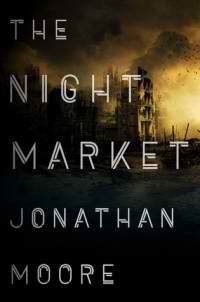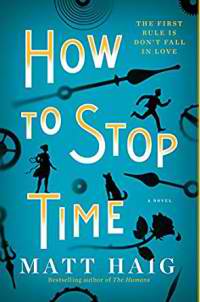Elysium Fire by Alastair Reynolds
 Friday, February 23, 2018 at 7:54AM
Friday, February 23, 2018 at 7:54AM 
First published in Great Britain in 2018; published by Orbit on January 23, 2018
Elysium Fire is a sequel to The Prefect, set in the universe known to Alastair Reynolds fans as Revelation Space (the title of the first novel set in that universe). Elysium Fire is basically a detective novel, but the detecting occurs in the detailed and intricate setting that consists of Chasm City (the title of the second novel in the Revelation Space universe) and the Glitter Band, orbiting habitats that have largely lapsed into decay. The Panoply, a law enforcement agency, maintains a sort of political and social order. Ordinary crime is left to local police agencies, but the Panoply addresses big issues, including preservation of the Athenian democracy that comes from letting inhabitants vote on just about everything that might concern them via implants in their brains.
Thalia Ng is a Prefect with the Panoply. With the help of her robotic whiphounds, she begins the novel by cutting off the head of a fellow who is apparently having a seizure. She isn’t told why she was given that order, but soon learns that people are dying, apparently due to overheated implants, and the only way to gather evidence is to preserve the head before the brain melts. The hope is to download memories that can be booted so the deceased can be quizzed about the circumstances that might have caused their implants to go haywire. That isn’t going well, and deaths (code-named Wildfire) seem to be increasing at an exponential rate, perhaps threatening everyone in Chasm City and the Glitter Band.
Thalia’s partner is a talking pig named Sparver Bancal. In the meanwhile, a senior investigator named Dreyfuss is questioning the backup memories (called betas) of the deceased about a white building called Elysium Heights that seems to link some of the deaths. Dreyfuss is additionally occupied with an antagonistic fellow named Devon Garlin, who views himself as a revolutionary. Dreyfuss also has an old nemesis on his hands, an Artificial Intelligence named Aurora who purports to seek an alliance for the purpose of battling Wildfire, although her real motivation involves a foe of her own, known as the Clockmaker.
Devon Garlin is part of the Voi family, which is responsible for the impenetrable system of wireless democracy by which Chasm City is governed. His exact role in that family is not immediately revealed. Flashbacks focus on two Voi children, Caleb and Julius, who are learning to manipulate quickmatter (from which nearly everything inorganic is now constructed) while being groomed for an oversight role regarding the machinery of democracy. The full background of Julius and Caleb is something of a mystery until the reader learns the truth about them, and about their connection to Devon Garlin.
As is always true of Reynolds, an enormous amount of thought went into Elysium Fire. The background details are just as interesting as the story. The primary characters (Thalia, Sparver, and Dreyfus) respond to conflicts in admirable ways, making them easy to like despite their faults. The younger members of the Voi family are portrayed in a way that makes it possible to understand and even sympathize with their feelings of alienation and anger. The plot works as a mystery, challenging the reader to piece together the novel’s various components to make sense of Wildfire, Elysium Heights, and the connection among the victims. The story also works as an action novel from time to time, although this is a cerebral story more than a shoot-’em-up space opera. The novel is long (as Reynolds’ novels tend to be) but the pace is steady and the tale is never dull. I’m giving Elysium Fire high marks as an entertaining entry in Reynolds’ fascinating Revelation Space universe.
RECOMMENDED



